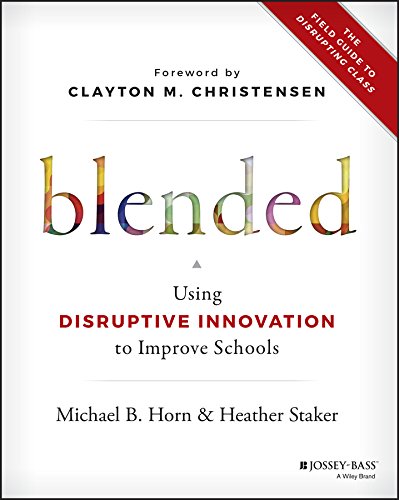Blended: Using Disruptive Innovation to Improve Schools Link to heading
Summary: Link to heading
“Blended: Using Disruptive Innovation to Improve Schools” by Heather Staker and Michael B. Horn explores how innovative educational technologies can transform traditional schooling. The authors delve into the concept of blended learning, which combines traditional face-to-face instruction with online learning experiences. The book outlines various models of blended learning and provides a framework to help educators effectively implement these strategies in their schools. Staker and Horn emphasize the potential of disruptive innovation to create student-centered, personalized learning environments that can enhance educational outcomes and prepare students for the challenges of the modern world.
Review: Link to heading
The book is widely regarded as a significant contribution to the conversation about educational reform, particularly in the context of integrating technology into classrooms. One of its strengths lies in its practical approach, supplying educators with actionable insights and clear frameworks for implementing blended learning effectively. The authors draw on extensive research and real-life examples, making the book both informative and relatable. However, some critics argue that the book could benefit from more discussions on the challenges and limitations of technology integration in diverse educational settings. Overall, it is viewed as a valuable resource for educators and policymakers interested in transforming educational practices through innovation.
Key Takeaways: Link to heading
- Blended Learning Models: The book outlines several models for implementing blended learning, such as station rotation, lab rotation, and flex models, providing examples and guidance on how to choose the right one for different contexts.
- Student-Centered Learning: A central theme is the shift from traditional teacher-led classrooms to environments that place students at the center, allowing them to learn at their own pace and style.
- Role of Technology: The effective use of technology can disrupt the traditional educational model, leading to more personalized and engaging learning experiences.
- Implementation Strategies: The authors offer strategies and frameworks for schools to adopt blended learning successfully, including considerations for infrastructure, curriculum design, and professional development for teachers.
Recommendation: Link to heading
“Blended: Using Disruptive Innovation to Improve Schools” is recommended for educators, administrators, and policymakers who seek to understand and leverage the power of technology in education. It is also beneficial for those interested in educational reform and looking for practical methods to enhance student engagement and learning outcomes through blended learning models.
